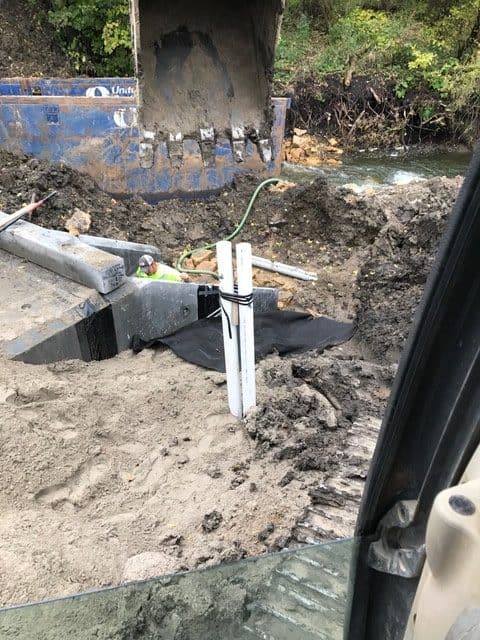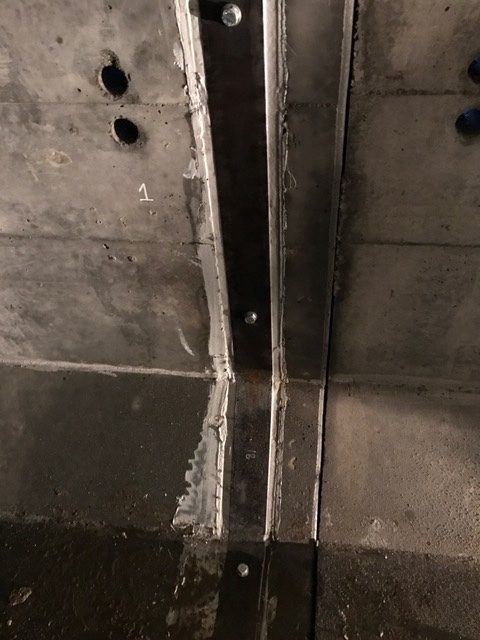Electric Fish Barrier Box Culvert
- Location: Waterville, Minnesota
- Contractor: JJD Companies
- Barrier Design: Smith-Root
- Size: 19 total 8′ x 6′ sections
- Purpose: To prevent upstream migration of invasive carp, specifically bighead carp and silver carp, into the upstream watersheds and lakes.
About this Project
Deemed necessary by the Minnesota Department of Natural Resources, JJD Companies contracted Smith-Root to design two electric fish barriers to be installed in the Waterville, MN area. The purpose of these barriers is to prevent upstream migration of invasive carp, specifically bighead carp and silver carp, into the upstream watersheds and lakes. Smith-Root specializes in technology for fisheries conservation, such as fish guidance and deterrence barrier with over fifty electric fish barriers installed in North America and Europe in the last thirty years. The electric barriers consist of mild steel electrodes, precast concrete box culverts, insulating material, connecting wires, and control enclosures containing the proprietary pulse generators (pulsers).
The pulsers generate an electrical pulse that is distributed through electrodes to create an electric field in the water. When fish approach the electric field, the current passes through their body and their self-preservation instincts cause them to move downstream to avoid the electric field. Entirely manufactured at our Maiden Rock, WI plant, the box culvert consisted of 19 total 8′ x 6′ sections, including the inlet and outlet sections. In order to significantly reduce the conductivity of the culvert near the electric current, nine sections were produced using an Insulcrete™ mix design along with a longitudinal Glass Fiber Reinforced Polymer (GFRP) rebar and non-conductive reinforcement ties and supports. Insulcrete™ uses certain additives and material sources that are more resistant to electricity.






